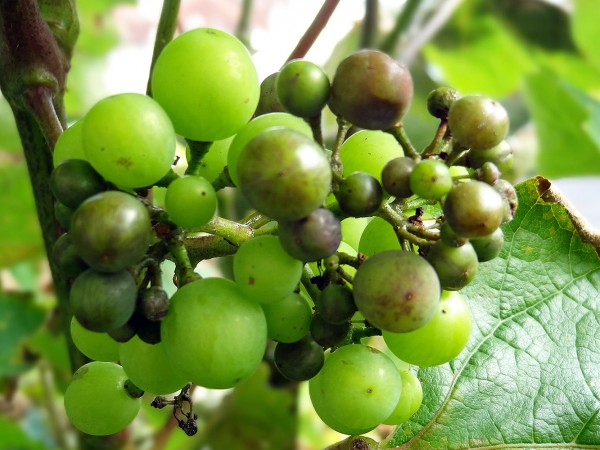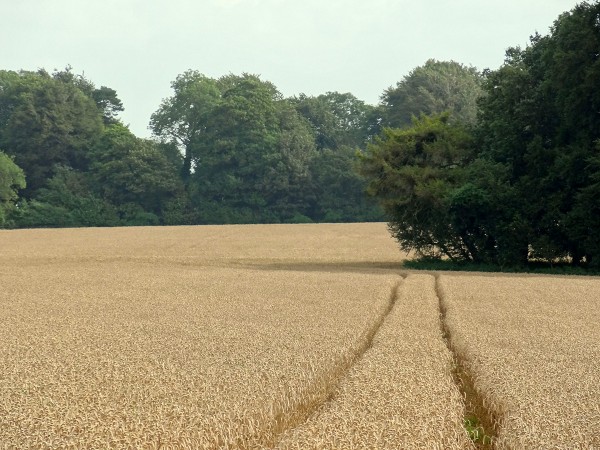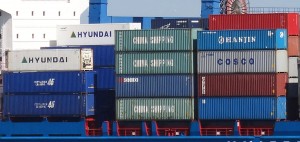 The model of demand and supply is one of the first diagrams that any student of Economics will see and it’s a very important model. We can apply it to a multitude of markets and understand how market prices for products and services are determined. One such market is that of wine, where a recent report suggests that wine is in short supply. Bad news for everyone!
The model of demand and supply is one of the first diagrams that any student of Economics will see and it’s a very important model. We can apply it to a multitude of markets and understand how market prices for products and services are determined. One such market is that of wine, where a recent report suggests that wine is in short supply. Bad news for everyone!
The price of wine is set by the interact of demand and supply. As with any market, numerous factors will affect how much wine is demanded at any price. Since 1996, global consumption of wine has been on the increase: for many, wine is a luxury good and thus as income rises, so does consumption. With the emergence of markets, such as China and subsequent income growth, consumption has risen. Furthermore, tastes have changed such that wine is becoming an increasingly desirable drink. So, this has all led to the demand curve shifting to the right.
 However, at the same time, the supply of wine has been falling, largely the result of ‘ongoing vine pull and poor weather’ across Europe. European production has fallen by around 10% over the past year and although production in other countries has been rising, overall production is still not sufficient to match the growth in demand.
However, at the same time, the supply of wine has been falling, largely the result of ‘ongoing vine pull and poor weather’ across Europe. European production has fallen by around 10% over the past year and although production in other countries has been rising, overall production is still not sufficient to match the growth in demand.
So, what’s the result of this high growth in demand combined with the decline in supply? A shortage of wine. A report by analysts at Morgan Stanley suggests that the global wine shortage was some 300m cases in 2012. But, more importantly what is the effect of this shortage? When demand for a product exceeds the supply, the market mechanism will push up the price. As stocks of wine continue to be depleted and consumption of wine keeps rising, the only outcome is a rise in the price of a bottle and a crate of wine.
Concerns are also being raised about the future of prices of some of our other favourite luxury products, such as chocolate, goats cheese and olives. In each case, it’s all about demand and supply and how these curves interact with each other. The following articles consider the prices of some of these products.
Wine shortage: the top five wines to drink – before they run out The Telegraph, Susy Atkins (30/10/13)
World faces global wine shortage – report BBC News (30/10/13)
Luxury food shortage scares – should we believe the warnings? The Guardian, Emine Saner (5/11/13)
The global wine ‘shortage’ Napa Valley, Dan Berger (8/11/13)
Global Shortage of wine beckons Independent, Felicitiy Morse (30/10/13)
The global wine shortage is about to get worse (if you like Bordeaux) TIME World, David Stout (6/11/13)
Have no fears about a world wine shortage – the glass is still half fulll The Telegraph, Victoria Moore (31/10/13)
Drink it while you can, as study points to looming wine shortage Associated Press (31/10/13)
Don’t waste a drop! Wine prices to rise as demand grows Mail Online, Amie Keeley (31/10/13)
Questions
- Use a demand and supply diagram to illustrate how the market price for wine (or any other product) is determined.
- Why does the demand curve for wine slope downwards and the supply curve of wine slope upwards?
- Which factors will affect (a) the demand and (b) the supply of wine?
- One the diagram you drew in question, illustrate a shortage of wine. How will the price mechanism work to restore equilibrium?
- Why does the Morgan Stanley report suggest that a wine shortage might emerge?
- What suggestions are there that there is no wine shortage?
 The market for any good or service is affected by countless factors. On the demand-side, things such as incomes, relative prices, expectations of price changes and tastes determine the shape and position of the demand curve. For the supply curve, it’s factors including costs of production, the profitability of alternative goods and in some cases, the weather or natural disasters. It is this last factor, which has presented Weetabix with problems.
The market for any good or service is affected by countless factors. On the demand-side, things such as incomes, relative prices, expectations of price changes and tastes determine the shape and position of the demand curve. For the supply curve, it’s factors including costs of production, the profitability of alternative goods and in some cases, the weather or natural disasters. It is this last factor, which has presented Weetabix with problems.
An established breakfast cereal and brand, Weetabix is well-known for producing a range of high quality products. However, production of some of its most popular products has been stopped, as the quality of the British wheat used to make the various cereals was called into question. Last year, we had little summer to speak of and this led to the ‘worst harvest we have seen in decades’, so much so that the quality of the wheat was not sufficient to be used in making the breakfast cereal. This has caused production to cease on certain products and shortages have already begun to emerge, with some shops completely selling out and facing no prospect of being re-stocked.
 Weetabix is now owned by a Chinese state-owned company, but still prides itself on using locally sourced wheat. However, with the weather affecting the harvest, wheat from abroad has had to be used, aiming to reduce the gap between demand and supply. The UK is typically an exporter of wheat, but with the poor harvest has come a drop in the amount of wheat produced and thus exported by some 2m tonnes – this is back to a similar level as was seen in the 1980s. A spokesman for Weetabix said:
Weetabix is now owned by a Chinese state-owned company, but still prides itself on using locally sourced wheat. However, with the weather affecting the harvest, wheat from abroad has had to be used, aiming to reduce the gap between demand and supply. The UK is typically an exporter of wheat, but with the poor harvest has come a drop in the amount of wheat produced and thus exported by some 2m tonnes – this is back to a similar level as was seen in the 1980s. A spokesman for Weetabix said:
Normally they’re proud to claim Weetabix is not just British wheat but from within 50 miles of Burton Latimer … They have had to source a bit from outside the UK, but Weetabix is still proud to say it sources its wheat within the UK … weather permitting.
Supply will be increased once wheat from abroad is used, but it is expected that this will take a couple of weeks. In the meantime, if you’re a consumer of the traditional Weetabix, you don’t need to worry, as it’s the less-known cereals that have been affected. The following articles consider this external factor and how it affects the supply of a product.
Weetabix products hit by poor wheat harvest BBC News (22/4/13)
Weetabix supplies hit by dismal harvest The Guardian, Rupert Neate (22/4/13)
Weetabix move to scale back production and re-engineer process is a commendable one The Grocer (20/4/13)
Britain’s disastrous wheat harvest halts production of Weatbix Minis and Oatibix Mail Online, Leon Watson (22/4/13)
Bad weather threatens wheat harvest Channel 4 News, Tom Clarke (3/4/13)
Weetabix halts production of Minis after poor harvest Farmers Weekly, Philip Case (22/4/13)
Questions
- With a poor harvest, which way would you expect the supply curve to shift? Illustrate this on a diagram.
- How should this shift in supply affect the market price and quantity of wheat, assuming all else remains the same?
- How can this example can be used to explain the interdependence between markets?
- With shortages possibly emerging, what might happen to demand today? Illustrate your answer on a demand and supply diagram.
- Does sourcing wheat from local areas give Weetabix a competitive advantage? If so, how might it be affected if it does choose to import wheat?
 With globalisation, more and more businesses have found it beneficial to ‘go global’. There are many reasons why a firm might choose to expand its production or market to other countries and one particular advantage is cutting costs in the manufacturing of products.
With globalisation, more and more businesses have found it beneficial to ‘go global’. There are many reasons why a firm might choose to expand its production or market to other countries and one particular advantage is cutting costs in the manufacturing of products.
Countries such as China and India have become leaders in production. Look at many of the items you own – I’m sure you’ll see a ‘Made in China’ or ‘Made in India’ amongst them. These fast emerging countries were highly sought after as places to produce due to much cheaper production costs. This advantage led to Western companies outsourcing much of their manufacturing base to China, as a means of retaining a competitive advantage.
However, the cost advantages that China boasted are now less significant and we may be about to see the emergence of a new manufacturing hub. Other countries that are further behind the BRICS in the development process now have cost advantages over places like China and so we may see another transfer of manufacturing to other parts of the world.
 When splitting up a supply chain to gain cost advantages a key consideration is the extent to which you lose control. Communication and co-ordination issues can emerge when design takes place in one country; production in another and then the products are sold around the world. When cost differences are huge, these problems can be overlooked, as what they might cost you in terms of lost time etc. is easily made up by savings through cheaper labour.
When splitting up a supply chain to gain cost advantages a key consideration is the extent to which you lose control. Communication and co-ordination issues can emerge when design takes place in one country; production in another and then the products are sold around the world. When cost differences are huge, these problems can be overlooked, as what they might cost you in terms of lost time etc. is easily made up by savings through cheaper labour.
However, when the cost advantages of production in China shrink, companies are still left with the problems of communication and co-ordination. These now represent more significant costs that could be reduced were production to revert to the country of design or if production were to be moved to an even cheaper country.
The following article from BBC News considers the issues surrounding the supply chain and how businesses may benefit from more collaboration.
Better collaboration lets businesses take back the supply chain BBC News, Alastair Sorbie (15/6/12)
Questions
- What are the arguments for becoming a multinational?
- Why do host countries, such as the BRICS accept inward investment? What do they gain from it?
- Explain how the product life cycle can affect the profitability of a MNC and how the company might respond.
- What are the disadvantages to a MNC from ‘going global’?
- What are the problems faced by developing countries acting as host nations?
- How has technology affected both big and small businesses?
News articles can give us the impression that the world is both more warlike (with fighting in various countries) but also more peaceful and prosperous. To try to explain this confusion, an American economist with the Teal consultancy group, Richard Aboulafia, has developed a unique index; the Guns-to-Caviar Index. By mapping how much the world spends on fighter jets (guns) against how much the world spends on executive private jets (caviar) for the last 17 years, Aboulafia has given us an interesting view of the state of the world.
Obscure Economic Indicator: The Guns-to-Caviar Index MSN Slate(14/12/06)
Questions
| 1. |
What is meant by a production possibility frontier. |
| 2. |
Draw a production possibility frontier to illustrate the underlying theory behind the Guns-to-Caviar index. Use the diagram to illustrate the changes that have taken place in the index during the 1990s and the early part of this century. |
| 3. |
Critically assess whether the Guns-to-Caviar index can really help explain changes in the current geopolitical/economic climate. |
 The model of demand and supply is one of the first diagrams that any student of Economics will see and it’s a very important model. We can apply it to a multitude of markets and understand how market prices for products and services are determined. One such market is that of wine, where a recent report suggests that wine is in short supply. Bad news for everyone!
The model of demand and supply is one of the first diagrams that any student of Economics will see and it’s a very important model. We can apply it to a multitude of markets and understand how market prices for products and services are determined. One such market is that of wine, where a recent report suggests that wine is in short supply. Bad news for everyone! However, at the same time, the supply of wine has been falling, largely the result of ‘ongoing vine pull and poor weather’ across Europe. European production has fallen by around 10% over the past year and although production in other countries has been rising, overall production is still not sufficient to match the growth in demand.
However, at the same time, the supply of wine has been falling, largely the result of ‘ongoing vine pull and poor weather’ across Europe. European production has fallen by around 10% over the past year and although production in other countries has been rising, overall production is still not sufficient to match the growth in demand.


